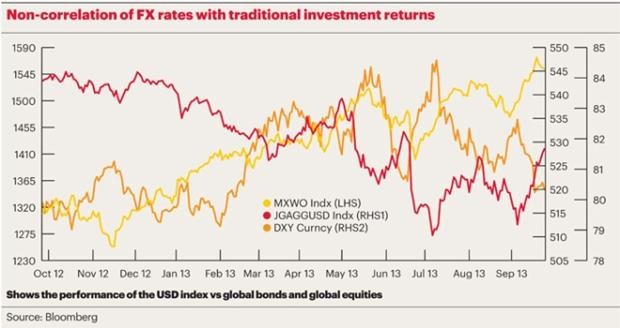How liquid alternative investment strategies can diversify your portfolio Smart Business Magazine
Post on: 11 Апрель, 2015 No Comment

John Micklitsch, CFA, Director of Wealth Management, Ancora Advisors LLC
When you own a stock you’re taking a risk on that company, hoping to be rewarded for its future success. With bonds, you’re taking interest rate and credit risk on a locked-in interest rate paid long-term by the company. Most people confine their portfolio to just these two basic asset categories, thereby only getting rewards associated with those risks.
Alternative investments use other risk/reward strategies that could possibly enhance returns and create additional, more diversified return streams than just a stock and bond portfolio can provide, says John Micklitsch, CFA, director of wealth management at Ancora Advisors, LLC .
“For a long time, these strategies have been available mainly to institutional investors only in the form of hedge funds and private partnerships that have high minimums, lock-up periods and other associated nuances,” he says. “But increasingly, these alternatives strategies — and their alternative sources of potential return — are now being made available in liquid, public mutual funds, exchange-traded funds, or closed-end fund formats that are tradable and accessible to retail investors and smaller institutions alike. What this means for investors is the potential to build more diversified portfolios than ever before.”
Smart Business spoke with Micklitsch about liquid alternatives and how to take advantage of this diversifying vehicle.
How do you define liquid alternatives?
Liquid alternatives are, first and foremost, investments that are publicly traded and can be sold anytime, just like a stock or a mutual fund. That is the liquid side. Second, liquid alternatives are investment strategies that have the potential to diversify portfolios beyond just what holding stocks and bonds can do. So, liquid alternative investments are publicly traded investment funds offering daily liquidity and that deploy strategies beyond simply holding stocks or bonds. Some examples of alternative strategies that are now available in liquid form include: market neutral, long short, currency, commodities, managed futures, global macro, merger arbitrage, risk parity and short biased, to name a few. When included, these strategies have the potential to add significant diversification benefits to a stock- and bond-only portfolio, and therefore could be of interest to investors.
What is driving the increased number of alternative investment choices available to investors?
For a long time, large institutional investors have been investing in strategies beyond stocks and bonds to diversify their portfolios. Increasingly, the investment firms who manage these types of strategies have become interested in tapping into the retail (individual) and smaller institution investment space. They have accomplished this by opening up mutual funds with many of the same characteristics as their prized institutional alternative strategies. This trend should continue because coming off of the 2008 financial crisis, retail investors have become very interested in improving their overall portfolio diversification in an attempt to avoid the kind of volatility they experienced during the crisis. Liquid alternatives can play a role in accomplishing that.
What role do they play in an investor’s portfolio?
These strategies can act like shock absorbers to a traditional stock- and bond-only portfolio, in the sense that they can dampen volatility by improving overall diversification. They also have the potential to enhance realized returns because with a less volatile portfolio, investors are more likely to stay the course with their investment plan over the long term. The end result over a substantial enough period of time — five to 10 years — should be a smoother, steadier march toward your goals.
What are some of the risks of these investments?

These strategies are getting a lot of attention and interest, and therefore are attracting a lot of new players. It is important to know the pedigree and capability of the firm launching this type of mutual fund. There is a real risk of inexperienced firms putting strategies out that may not achieve their objectives. You can mitigate this risk by working with an adviser who has a high-experience level in evaluating, monitoring and selecting alternative investments.
Another risk, if you want to put it that way, is the risk that your portfolio goes through a period of underperformance in an up market because these diversifying strategies do not keep pace. Investors forget about the need to diversify in a bull market and diversifying strategies go by the wayside. Greed takes over and fear becomes a distant memory. It is precisely at these moments that markets are at their most dangerous and when investors should be working with their advisers to evaluate their diversification strategies. So the risk becomes not sticking with it, suffering through the period of underperformance and then not getting the benefit when market conditions change.
How should investors interested in adding liquid alternative strategies to their portfolio go about it?
The benefits of liquid alternative strategies outweigh the risks, in our opinion, but the benefits are more likely to be realized if you work with an experienced adviser who is knowledgeable in this type of space. A reasonable fee for advice would be more than justified in helping you to select the proper liquid alternative investments for a portfolio. In addition, to get the true benefits of these diversifying strategies, investors should consider at least a 10 percent to 30 percent allocation within their portfolio depending on their goals, risk tolerance and objectives. Retail investors and smaller institutions have never had so many tools at their disposal to diversify their portfolios. The key is knowing how to use them, which ones to select and the proper portfolio weighting.
John Micklitsch. CFA, is the director of wealth management at Ancora Advisors, LLC, a SEC registered investment advisor. Reach him at (216) 593-5074 or [email protected]
Insights Wealth Management & Investments is brought to you by Ancora














